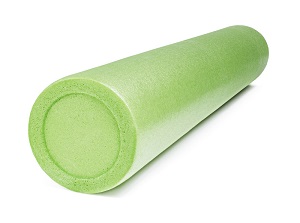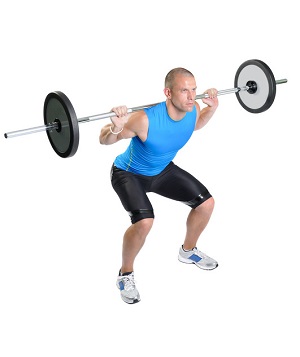 Most people tend to mainly focus on heavy weight lifting or things that involve running and jogging for either muscle toning or losing weight. What people do not realize or tend to ignore, is that flexibility is also important.
Most people tend to mainly focus on heavy weight lifting or things that involve running and jogging for either muscle toning or losing weight. What people do not realize or tend to ignore, is that flexibility is also important.
It is easy to ignore regular stretching sessions because you feel fit from the workouts. But the realization that you are not as perfectly fit as you thought sets in when you reach down for an object and are unable to get up again.
Once you start experiencing muscle twinges and knee aches, those are definite signs that something is clearly amiss. Flexibility exercises especially in preparation for the summer are a great way to prevent muscle constriction and pains. Summer is usually a fun time to explore various activities such as water-board skating, dancing, hiking and various other summer activities.
Regular flexibility exercises aids improve mobility and a variety of body movements. The more flexible the body is, the lesser the chances of acquiring an injury from summer activities as well as normal daily routines. Regardless of whether it’s dancing, mountain climbing or simply just swimming in the pool, these activities require great amount of force and flexibility for optimum body movement.
Here are a few common stretching exercises that are done to improve flexibility
1.Butterfly stretch
The butterfly stretch broadens muscles in the inner thigh and groin. One is required to sit on the floor with the feet flat to the ground. Let the knees drop to the ground and squeeze the soles of your feet together. Bring your heels close to your groin without causing pain. Your back should remain straight as you gently bounce your knees up and down repeatedly to loosen the muscles. The stretch should take about 8-10 seconds. Next, gently thrust your knees towards the ground using your elbows for another 8-10 seconds.
2.Kneeling quadriceps stretch
This enhances flexibility along the hamstrings and inner thigh as well as averts injury on the whole upper leg. It starts from a kneeling position. Bring the right foot forward and position it flat on the ground. The knee of your right leg should create 90 degrees angle. With your back still straight, slowly push your hips towards your right leg. You’ll be able to feel a stretch on your left quadriceps and right hamstring. Hold that position for about 10-15 seconds before doing a repeat with the left leg.
3.Arm and shoulder stretch
Flexibility doesn’t only apply to the back, waist and legs; arm and shoulder flexibility is also important for any activity. To start the shoulder stretch, connect your fingers and rotate your wrist in a manner that your palms are facing away from your body. Slowly lift your arms over your head and retain the stretch for approximately 10-15 seconds. Go back to the starting position and place your right hand behind your head. Grasp your right elbow with your right hand and carefully squeeze it down your back as far as you can without feeling a discomfort. Hold for 8-10 seconds then repeat the whole process with the left elbow.
There are various other flexibility stretches to aid one in preparation for the summer activities. It is important however to remember that in all exercises and stretches, safety comes first. Don’t over-do it to the point where you suffer an injury. Do smaller, simpler stretches, then with time progress to the more difficult ones after your body has gotten used to it.
For more articles go to http://clubonefitness.lifestyleezine.com

 The Foam Roller can be a life saver when it comes to stretching and helping with minor injuries. Rolling your body over foam cylinders can improve flexibility, reduce post-workout soreness, prevent sports injuries and even alleviate chronic pain.The foam roller is a great tool for lengthening and elongating muscles and is especially helpful for runners who often suffer from tight and fatigued muscles. The foam roller will also massage the muscles intensely, similar to what a massage therapist will do without the cost to visit one.
The Foam Roller can be a life saver when it comes to stretching and helping with minor injuries. Rolling your body over foam cylinders can improve flexibility, reduce post-workout soreness, prevent sports injuries and even alleviate chronic pain.The foam roller is a great tool for lengthening and elongating muscles and is especially helpful for runners who often suffer from tight and fatigued muscles. The foam roller will also massage the muscles intensely, similar to what a massage therapist will do without the cost to visit one. As babies and toddlers, we were able to squat for hours. It is actually considered a resting position in many cultures. A person’s ability (or inability) to squat is a good indication of his or her physical condition. One must not only possess a flexible body, but also have well-developed leg and back muscles. Although we were exceptionally good at it long ago, the lack of practice in squatting could render a person incapable of squatting, or to maintain the squatting position for more than a minute. Full squatting involves resting one’s weight on the feet with the buttocks resting on the backs of the calves. Most western adults cannot place their heels flat on the ground when squatting because of shortened Achilles tendons largely caused by habitually sitting on chairs or seats and wearing shoes with heels (especially high heels). For this reason the squatting position is usually not sustainable for more than a few minutes as heels-up squatting is a less stable position than heels-down squatting. With continual practice, we can get back to the full squat position we were used to as a child.
As babies and toddlers, we were able to squat for hours. It is actually considered a resting position in many cultures. A person’s ability (or inability) to squat is a good indication of his or her physical condition. One must not only possess a flexible body, but also have well-developed leg and back muscles. Although we were exceptionally good at it long ago, the lack of practice in squatting could render a person incapable of squatting, or to maintain the squatting position for more than a minute. Full squatting involves resting one’s weight on the feet with the buttocks resting on the backs of the calves. Most western adults cannot place their heels flat on the ground when squatting because of shortened Achilles tendons largely caused by habitually sitting on chairs or seats and wearing shoes with heels (especially high heels). For this reason the squatting position is usually not sustainable for more than a few minutes as heels-up squatting is a less stable position than heels-down squatting. With continual practice, we can get back to the full squat position we were used to as a child.